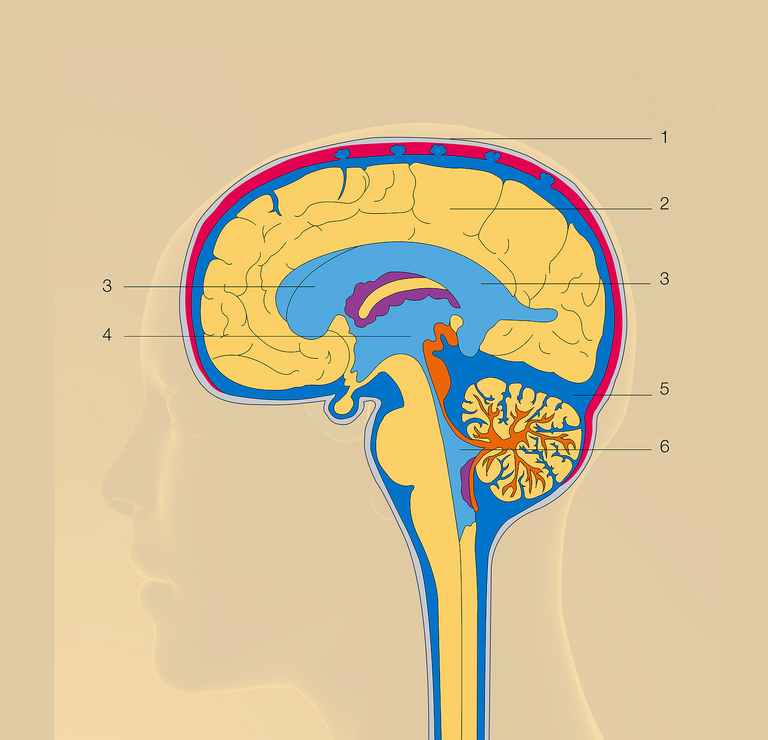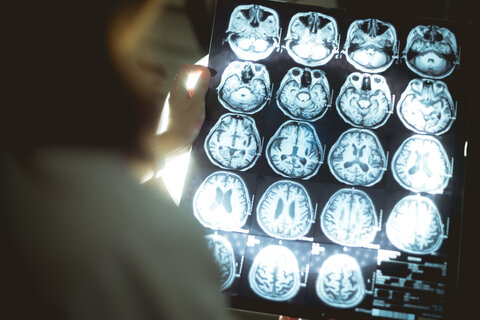Basic knowledge Ventricle system

The four ventricles of our ventricular system are divided into the two large lateral ventricles in the cerebral hemispheres, the third ventricle - much narrower - in the region of the diencephalon and the fourth ventricle in the region of the rhombic brain.
All four ventricles are interconnected and about 120 ml of cerebral fluid circulates in them in the adult human. A further 30 ml of cerebrospinal fluid circulates in the so-called external cerebrospinal fluid space and flows around the brain. The function of the cerebral fluid is to protect the brain from mechanical damage. It also regulates the intracranial pressure, keeps the brain tissue hydrated and transports metabolic products.
Every day the body of an adult produces about 500 ml of new cerebral fluid, which is finally reabsorbed by the venous blood system, so that it can be said that our cerebral fluid is exchanged about three times a day. A healthy person has a balance between the production and absorption of cerebral fluid. In the case of a hydrocephalus, more cerebrospinal fluid is usually produced than it can be absorbed and the cerebral ventricles are enlarged.
1 scullcap
2 brain
3 lateral ventricle
4 third ventricle
5 cerebrospinal fluid (CSF)
6 fourth ventricle







![[Translate to English:] [Translate to English:]](/fileadmin/_processed_/d/6/csm_MIETHKE_Patienten_erzaehlen_Teaser_144c4b77d2.jpg)